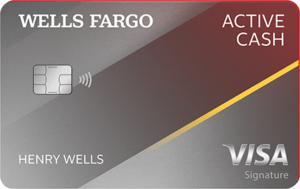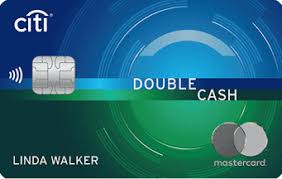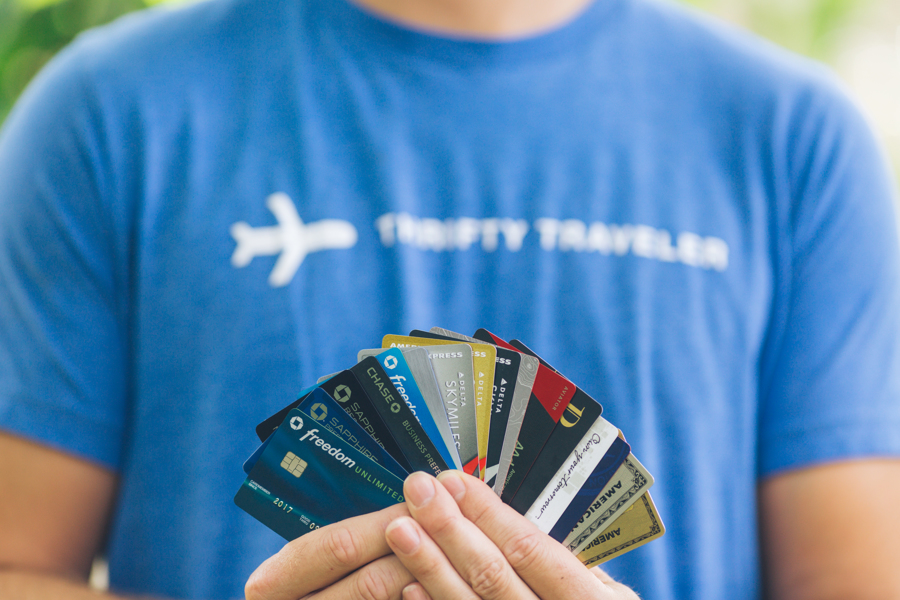The Best Credit Cards for College Students
10 min readWhether you’re studying at a local university or attending school halfway across the country, going off to college is a big deal. New friends, freedoms, and responsibilities mark a monumental time in many young adult lives.
One of the biggest responsibilities for many college students involves money … or the lack of it. No longer having the “Bank of Mom and Dad” to rely on leads many to wonder if it’s time to get a credit card and if so, which one.
Before we get too far, let’s get one thing out of the way: Credit cards are serious business. This warning is even more important for those just getting started with credit. Missed payments and late fees can add up and the decisions you make now can have a long-term impact on your financial picture.
That being said, if you’re able to handle a credit card responsibly and only use it for necessities that you’d otherwise be buying with cash or a debit card, getting one early can be a savvy financial move. So long as you’re able to make all your payments on time and in full, you’ll start building your credit early and earn valuable rewards in the process.
When it comes to deciding which credit card is best for college students, there are a lot of options. Let’s take a look at some of the best ones.
Chase Freedom Unlimited®
The *freedom unlimited* isn’t just one of the best credit cards for college students, it’s one of the best no-annual-fee credit cards on the market, period.
With the Freedom Unlimited, you’ll earn, wait for it … unlimited 1.5% cash back on all your purchases. But it gets even better if your purchases fall into one of the card’s bonus categories: 3% cash back on dining and at drug stores, 5% cash back on travel booked through Chase Travel℠, and 5% back on Lyft rides (through March 2025).
What’s more, the card’s current bonus offer allows you to earn an additional 1.5% cash back on all purchases (up to $20,000 spent in the first year) – up to $300 cash back. That means you’ll be earning at least 3% cash back on all purchases during the first year of holding this card, and even more if it falls into one of those bonus categories.
This card is also a great way to get started earning valuable Chase Ultimate Rewards points that when later paired with a card like the *chase sapphire preferred*, can be used to book travel or transferred to Chase’s slew of travel partners for even greater value.
Full Benefits of the Chase Freedom Unlimited Card
- Welcome offer: bonus_miles_full
- After you’ve met the intro offer spending threshold or had the card for a year:
- Earn 5% cash back on travel booked through Chase Travel℠
- Earn 5% cash back on Lyft rides through March 2025
- Earn 3% cash back on dining, including takeout and on eligible delivery services
- Earn 3% cash back at drugstores
- Earn unlimited 1.5% cash back on all other purchases after your first year with the card
- Subject to the Chase 5/24 rule, so you won’t get approved for the Chase Freedom Unlimited if you’ve opened five or more credit cards (from any bank, not just Chase) in the last 24 months.
- No annual fee
Read our full review of the Chase Freedom Unlimited!
Learn more about the *freedom unlimited*.
Capital One SavorOne Student Cash Rewards Credit Card
Capital One offers a long list of credit cards including a couple specifically designed for students and those looking to build credit. One of our favorite options is the *SavorOne Student*.
With this card, you’ll earn bonus points in several categories where students spend most. With 3% cash back on dining, entertainment, streaming services, and at grocery stores, you’ll be able to rack up rewards in no time. Plus, you’ll earn unlimited 1% cash back on all other purchases.
To kick things off, Capital One is also offering new cardmembers the opportunity to bonus_miles_full. While not quite as impressive as the bonus available on other cards, this one is specifically designed for students and that makes getting approved with limited or no credit history easier.
Just like the Chase Freedom Unlimited, this card is also a good one to pair with one of Capital One’s travel cards like the *capital one venture card* or the more premium *venture x* later on down the road.
Full Benefits of the Capital One SavorOne Rewards for Students Card
- Welcome offer: bonus_miles_full
- Earn 3% cash back on dining, entertainment, popular streaming services and at grocery stores (excluding superstores like Walmart and Target).
- Earn 10% cash back on purchases on Uber and Uber Eats, plus get your Uber One monthly membership fee covered through November 14, 2024.
-
Earn 8% cash back on Capital One Entertainment purchases.
- Earn 5% cash back on hotels and rental cars booked through Capital One Travel.
- Earn 1% cash back on all other purchases.
- No annual fee
Learn more about the *SavorOne Student*.
Wells Fargo Active Cash® Card
Wells Fargo made a splash with the introduction of its new Wells Fargo Autograph Journey Visa® Card earlier this year, but its longstanding Wells Fargo Active Cash® Card is a solid option for college students.
To kick things off, this card comes with a $200 cash back bonus when you spend $500 on purchases in the first three months. And beyond the big bonus, you’ll earn unlimited 2% cash back on all purchases, meaning you don’t need to worry about spending in a specific category – you’ll be earning solid rewards no matter where you swipe it.
Another nice thing about the Wells Fargo Active Cash is that it comes with up to $600 of cell phone protection (subject to a $25 deductible). If one of your newfound financial responsibilities involves a monthly cell phone bill, being able to bypass your carrier’s pricey insurance and rely on the coverage that comes with your card is a nice perk. I’m not saying college students are reckless … but accidents happen.
Wells Fargo lets cardholders combine rewards across all cards so this card is also a great way to get started earning rewards and then be able to move them to one of the bank’s new airline and hotel transfer partners for even greater value if you open a Wells Fargo travel card in the future.
Full Benefits of the Wells Fargo Active Cash Card
- Welcome offer: Earn a $200 cash back bonus when you spend $500 on purchases in the first three months.
- Earn unlimited 2% cash back on purchases with no categories to track or quarterly activations.
- Cell phone insurance: Get up to $600 of cell phone protection against damage or theft. Subject to a $25 deductible.
- No annual fee
All information about the Wells Fargo Active Cash Card has been collected independently by Thrifty Traveler and has not been reviewed by the issuer.

Learn more about the Wells Fargo Active Cash® Card (for full disclosure, this is not an affiliate link).
Citi Double Cash
The Citi Double Cash® Card has long been among the most rewarding cash back credit cards on the market, making it a great option for college students. It’s simplicity and lack of an annual fee are ideal for anyone just getting started with credit.
Like the other cards on our list, this one also comes with a nice bonus offer: You can currently earn a $200 cash back bonus after spending $1,500 within the first six months of card membership. Having a full six months to spend the required $1,500 should be more than enough time for even the most frugal students.
Beyond the initial bonus, you’ll be earning really solid rewards for every purchase you make with the card. It works like this: You’ll get 1% cash back when you make a purchase, and another 1% cash back after you pay your bill – essentially earning at least 2% cash back on everything. To earn the additional 1% cash back when paying for your purchases, you must make at least the minimum payment due – but you should really be paying your card in full each month.
Full Benefits of the Citi Double Cash® Card
- Welcome offer: Earn a $200 cash back bonus after spending $1,500 within the first six months of card membership.
- Earn 2% cash back: Earn 1% when you buy and 1% as you pay for purchases, with no spending categories or caps to worry about.
- Earn 5% cash back: Through Dec. 31, 2024, you can earn an additional 3% cash back (5% total) on hotels, car rentals, and attractions booked through the Citi TravelSM portal.
- No annual fee
All information about the Citi Double Cash Card has been collected independently by Thrifty Traveler and has not been reviewed by the issuer.

Learn more about the Citi Double Cash® Card (for full disclosure, this is not an affiliate link).
Tips for Getting Started With a Credit Card
It bears repeating that credit cards are serious business. Each of the cards on our list comes with a respectable bonus offer and promises cardholders the ability to earn lots of cash back on their everyday purchases – but none of that is worth going into debt over. If you don’t feel ready to handle the financial responsibility of a credit card, it’s best to stick with cash or a debit card until that changes.
On the other hand, credit cards aren’t something to fear. When used responsibly, they’re a great financial tool that will help you build credit – leading to lower interest rates on car loans, home mortgages, and even insurance – all while earning valuable rewards on purchases you’d already be making.


Read more: Will Opening a New Credit Card Hurt Your Credit Score?
Depending on where you go to school, you might even be able to pay your tuition (or buy textbooks) with a credit card and earn even more rewards. However, there are a couple of things to keep in mind if you’re considering this strategy. If your school charges a processing fee for paying tuition with a credit card (many do) it will likely negate the rewards you’d earn – even with the most lucrative cards.
The other big thing to keep in mind is that you should never use a credit card in place of a student loan. If you’re planning to finance your education, student loans are the best option. You can however pay tuition with your credit card and then use a student loan to pay off the balance in full. Again, you’ll need to make sure that you’re not paying more in processing fees than you’d be earning in cash back for this to make sense.
Application Tips
One of the biggest questions we get from students applying for a new card is how to fill out the application. For the most part, credit card applications look similar across all the major banks.
They’ll ask you for some (relatively) easy personal information like your name, birthdate, and social security number. But there are also some other, more complicated, questions like gross annual income and address.
I know what you’re thinking, knowing your address isn’t hard … and you’re right. But knowing which address to use on a credit application can be. Most college students live away from home for a majority of the year but in our experience, it’s best to use an established, permanent address on credit applications. Unless you’ve got utility bills and bank statements coming to your college address, you’re better off using mom and dad’s address when applying for a card.


The other tricky application question is gross annual income. Many college students work seasonal or summer jobs, but even that might not yield much income. So what should you put down?
Well first and foremost, you should never lie on a credit application so it’s important to only include income that’s real. But that can include money from sources other than just your job. For example, if your parents pay your rent or give you a monthly stipend to buy groceries, you can treat that as income and include it on your application. You can also include money received from scholarships and grants as income because there aren’t any obligations to repay it like there is with student loans.
Finally, the banks are looking for your gross income, meaning the amount you make before taxes are taken out. This means you might need to look back at some of your old paystubs to figure out how much you’re actually making instead of just relying on the amount that’s on your check or direct deposit.
It’s important to include all your income channels in order to give yourself the best shot at getting approved. And keep in mind that many of the cards on this list are designed for beginners. Not having a lengthy credit history isn’t a bad thing.
Bottom Line
With school right around the corner, many college students are wondering if now is the right time to get a new credit card … and if so, which one. While credit cards are no doubt serious business, they’re also be a prudent financial tool that can help young adults build credit and earn rewards on their everyday purchases.
When deciding which card is best for you, it’s important to consider all the fees, benefits, and rewards associated with each card. Thankfully, there are lots of great options.
Featured image courtesy of The Jopwell Collection, via Unsplash.



